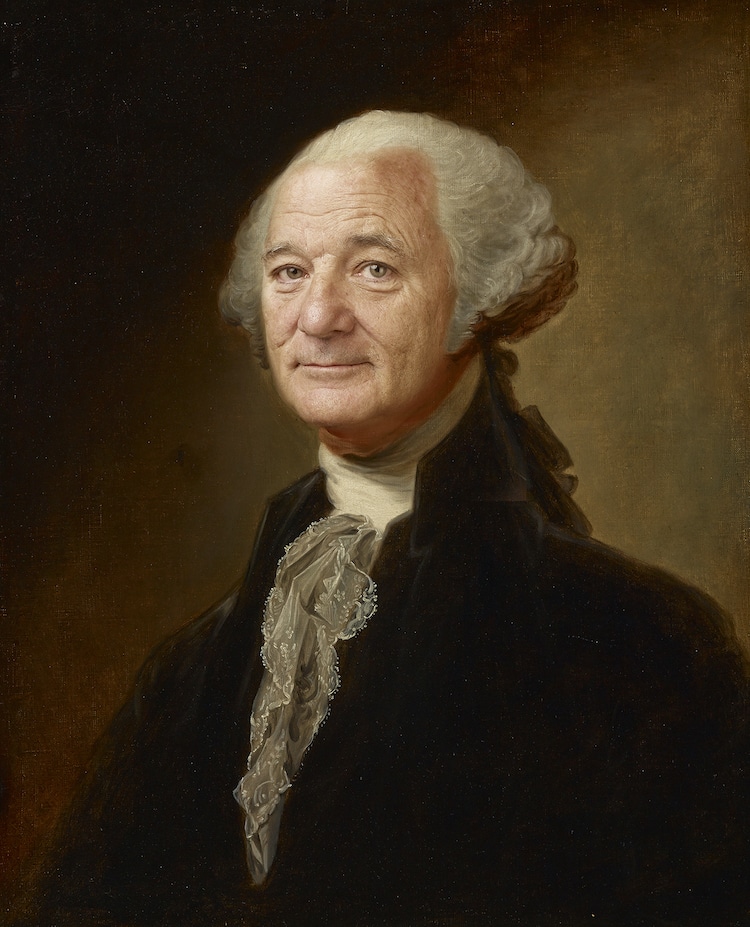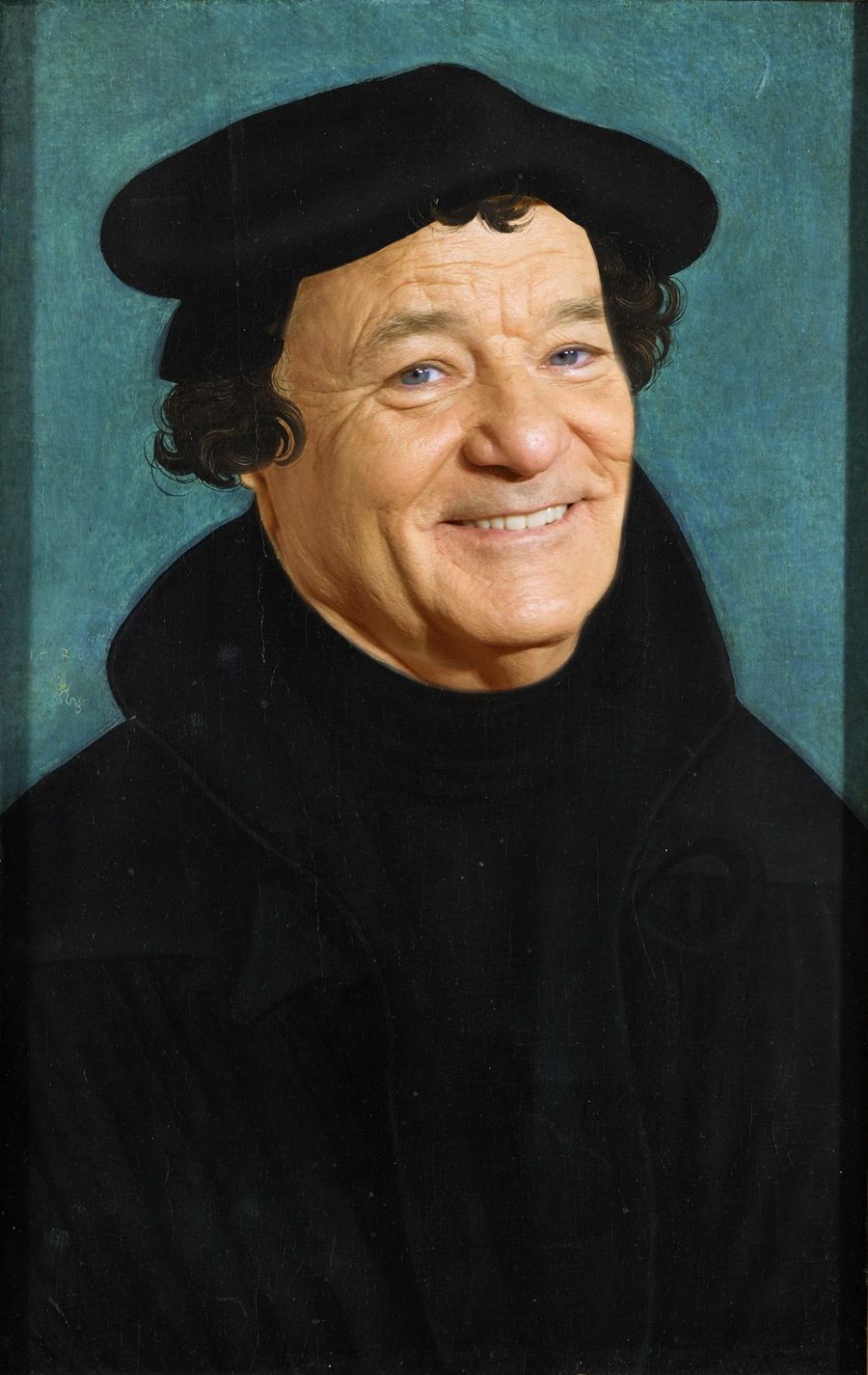
Bill Murray isn’t one of those actors who disappears into a role.
Nor is he much of a chameleon on canvas, however iconic, as artist Eddy Torigoe demonstrates with a series that grafts Murray’s famous mug onto a number of equally well-known paintings.
Torigoe told Digg that he was inspired by accident, when he was struck by the uncanny resemblance between Gilbert Stuart’s Lansdowne portrait of George Washington, and a photo of Murray posted by a Reddit user.
He downloaded both images and busied himself with Photoshop.
The rest is history.

The Presidential update is an improvement in ways. Murray-faced Washington appears kindly, and not averse to a bit of fun. No teeth of enslaved peoples compromising that mouth.

While Murray is capable of maintaining a straight face—witness his work in Lost in Translation, The Razor’s Edge, Hamlet 2000, and Torigoe’s homage to Whistler’s Mother, above—more often than not a certain puckishness shines through.

One wonders what would have befallen painter Jacques-Louis David had he bestowed The Emperor Napoleon in His Study at the Tuileries with Murray’s goofy expression.
And it’s well established that a key element of Grant Wood’s oft-parodied American Gothic is the poker faced reserve of its male subject.

Had they been alive today, it’s conceivable that Lucas Cranach the Elder’s portrait of Martin Luther might have depicted a lighter side of his friend, something more Murray-esque. Though given the Reformation and his 95 Theses against Indulgences, maybe not….

Explore more of Eddy Torigoe’s Bill Murray-enriched masterpieces of art, including self-portraits by Rembrandt, Frida Kahlo, and Picasso, on his website.
via My Modern Met
Related Content:
Bill Murray Explains How a 19th-Century Painting Saved His Life
Ayun Halliday is an author, illustrator, theater maker and Chief Primatologist of the East Village Inky zine. Follow her @AyunHalliday.
The Face of Bill Murray Spruces Up Iconic Paintings is a post from: Open Culture. Follow us on Facebook, Twitter, and Google Plus, or get our Daily Email. And don't miss our big collections of Free Online Courses, Free Online Movies, Free eBooks, Free Audio Books, Free Foreign Language Lessons, and MOOCs.
from Open Culture https://ift.tt/3hiqqcR
via Ilumina
Comments
Post a Comment